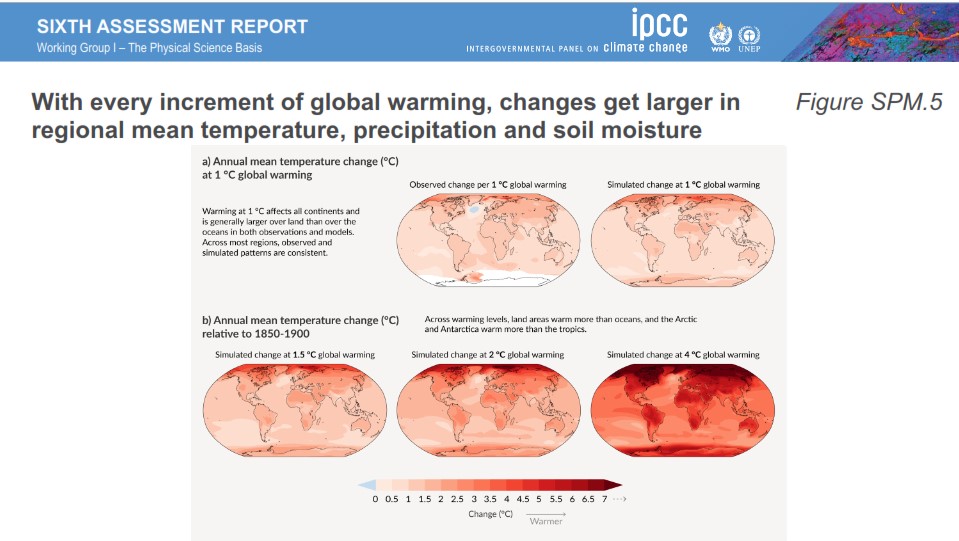Net Zero in Context: Climate Change & Buildings
By Jason Gaekwad, Regional Manager | Sustainability + Building Physics
The first in a series of short articles which cover concepts around ‘Net Zero’ and what it means for buildings and construction projects. The present article places the Net Zero movement in context with the global challenge it was invented to overcome – Climate Change – and discusses the impact of the building and construction industry on emissions globally and in Australia. Further articles will discuss the concept of ‘Net Zero’ and the various definitions, strategies, and pathways surrounding it.
The challenge at hand – Climate Change
Scientists have long warned that the amount of carbon dioxide in the atmosphere should remain below 450 parts per million, to avoid potentially catastrophic climate change. In 2016, 175 countries signed the Paris Agreement on climate change, a global framework for action on climate change. The agreement aims to limit global warming to well below 2°C by having countries voluntarily reduce emissions of carbon dioxide and other greenhouse gases. Australia is a signatory to the agreement, and as part of this commitment, must submit emissions reduction commitments to the United Nations Framework Convention on Climate Change every 5 years.
In August 2021, the Intergovernmental Panel on Climate Change (IPCC) released it’s sixth assessment report (AR6) [1] which details the scientific basis of the current and potential future states of the climate. The future scenarios considered put the ‘best estimate’ increase in average temperature at 1.5°C in between now and 2040, with estimates of longer term (up to 2100) increase ranging from 1.4°C to 4.4°C. This report adds a level of urgency, now that we know major climate change impacts are irreversible.
View the IPCC slide in a large format: https://inhabitgroup.com/wp-content/uploads/2021/09/IPCC-slide.jpg
Prior to the release of the AR6 report, the IPCC maintained a series of reports detailing the state of the climate and likely future climate scenarios. In 2018, a report (SR15) by the IPCC warned of punishing environmental impacts if emissions are not curtailed sufficiently to prevent even 1.5°C of warming. Climate warming will result in extreme weather events, rising sea levels, and food and water scarcity, according to the report. It highlighted the need to limit warming to no more than 1.5°C; many ocean ecosystems, including the majority of the world’s warm water coral reefs, are likely to disappear if warming exceeds this level [2].
Limiting warming to below 1.5°C imposes significant challenges globally; according to the SR15 reports, if Net Zero emissions is achieved by 2048 there is only a 50% chance that warming will stay below 1.5°C. Achieving net zero by 2038 improves this chance to two thirds, but global emissions must fall by up to 75% (relative to 2017 levels) by 2030. Further, for every year of failed action the window to reach net zero is reduced by two years [3].
Buildings as a contributor
Globally, buildings are responsible for around 40% of carbon emissions [4]. This figure can be conveniently attributed to operational emissions (28%) and embodied emissions (11%). For clarity:
Operational emissions are associated with operating a building and typically include emissions from heating and cooling, lighting, ventilation, appliances and plug loads, domestic hot water, etc. Generally, in Australia, grid electricity and natural gas are the main sources of operational GHG emissions.
Embodied emissions are associated with the construction of a building and all its input materials and processes. Various methods are used to assess embodied emissions, however, the whole life cycle of a material should generally be considered, from primary extraction of raw materials through manufacturing, transport, construction or installation, use, and end-of-life.
Various methods of approaching embodied emissions and system boundaries will likely be the subject of another article.
Climate change poster
Figure SPM.5 from IPCC Climate Change 2021: The Physical Science Basis AR6 WGI Report Summary For Policymakers).
From a global perspective this narrative indicates that energy efficiency of both existing and new building stock can make a significant difference to achieving global climate targets. This can (and has been) actioned globally, with varying responses from international governments. Similarly, reducing the embodied energy of new buildings, especially in regions which use carbon-intensive building materials, can directly contribute to saving on our carbon bottom line. This can be achieved through flexible design, material reuse, refurbishment and repurposing, etc, as well as through responsible procurement and supply chain accountability. Both the operational and embodied factors are the essence of what is driving the international ‘Net Zero’ concept today.
The carbon footprint of Australian buildings is a slightly more tenuous figure, variously estimated at around a fifth [5] or a quarter [6] of national carbon emissions. Even more tenuous is the relative contribution of operational and embodied emissions. The Australian Sustainable Built Environment Council [7] appears to estimate operational contributions at around 25% of Australia’s total GHG emissions, further stating that buildings are responsible for about half of the country’s electricity consumption. Yu et al [8] estimate that construction activities in Australia contribute to 18% of Australia’s total GHG emissions. Electricity use was found to be the highest contributor, followed by embodied emissions from the material supply chain.
Although specific figures are elusive, the data agree that both operational and embodied emissions are significant contributors to Australia’s national GHG emissions. There is a clear case for widespread reduction of both operational and embodied emissions. I’ll be discussing how the building industry has responded to such compelling evidence in the next instalment of this series.

